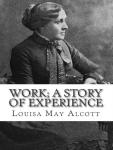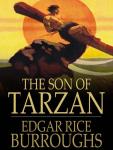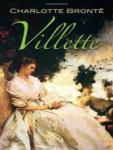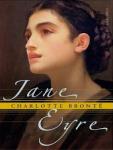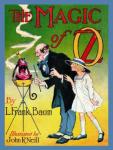The Cricket on the Hearth
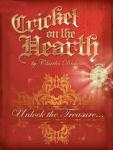
The Cricket on the Hearth. A Fairy Tale of Home is a novella by Charles Dickens.John Peerybingle, a carrier, lives with his young wife Dot, their baby boy and their nanny Tilly Slowboy. A cricket constantly chirps on the hearth and acts as a guardian angel to the family. One day a mysterious elderly stranger comes to visit and takes up lodging at Peerybingle's house for a few days.The life of the Peerybingles intersects with that of Caleb Plummer, a poor toymaker employed by the miser Mr. Tackleton. Caleb has a blind daughter Bertha, and a son Edward, who traveled to South America and was thought dead.The miser Tackleton is now on the eve of marrying Edward's sweetheart, May, but she does not love Tackleton. Tackleton reveals to John Peerybingle that his wife Dot has allegedly cheated on him and shows him a clandestine scene where Dot embraces the mysterious lodger who is in disguise, a man much younger than he actually seems. John is cut to the heart over this as he loves his wife dearly, but decides after some deliberations to relieve his wife of their marriage contract.In the end, the mysterious lodger is revealed to be none other than Edward who has returned home in disguise. Dot shows that she indeed has been faithful to John. Edward marries May hours before she is scheduled to marry Tackleton. However Tackleton's heart is melted by the Christmas season, like Ebenezer Scrooge, and he surrenders May to her true love.
Related Books
Author other works
-
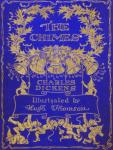
The Chimes
Charles Dickens
The Chimes: A Goblin Story of Some Bells that Rang an Old Year Out and a New Year In, a short novel by Charles Dickens, was written and published in 1844, one year after A Christmas Carol and one year before The Cricket on the Hearth. It is the second in his series of "Christmas books": five short books with strong social and moral messages that he published during the 1840s.One New Year's Eve, Trotty, a "ticket-porter" or casual messenger, is filled with gloom at the reports of crime and immorality in the newspapers, and wonders whether the working classes are simply wicked by nature. His daughter Meg and her long-time fiancé Richard arrive and announce their decision to marry next day. Trotty hides his misgivings, but their happiness is dispelled by an encounter with the pompous Alderman Cute, plus a political economist and a young gentleman with a nostalgia, all of whom make Trotty, Meg and Richard feel they hardly have a right to exist, let alone marry.Trotty carries a note for Cute to Sir Joseph Bowley MP, who dispenses charity to the poor in the manner of a paternal dictator. Bowley is ostentatiously settling his debts to ensure a clean start to the new year, and berates Trotty because he owes a few shillings to his local shop which he cannot pay off. Returning home, convinced that he and his fellow poor are naturally ungrateful and have no place in society, Trotty encounters Will Fern, a poor countryman, and his orphaned niece, Lilian. Fern has been unfairly accused of vagrancy and wants to visit Cute to set matters straight, but from a conversation overheard at Bowley's house, Trotty is able to warn him that Cute plans to have him arrested and imprisoned. He takes the pair home with him and he and Meg share their meagre food and poor lodging with the visitors. Meg tries to hide her distress, but it seems she has been dissuaded from marrying Richard by her encounter with Cute and the others.In the night, the bells seem to call Trotty. Going to the church, he finds the tower door unlocked and climbs to the bellchamber, where he discovers the spirits of the bells and their goblin attendants who reprimand him for losing faith in man's destiny to improve. He is told that he fell from the tower during his climb and is now dead, and Meg's subsequent life must now be an object lesson for him. There follows a series of visions which he is forced to watch, helpless to interfere with the troubled lives of Meg, Richard, Will and Lilian over the subsequent years. Richard descends into alcoholism; Meg eventually marries him in an effort to save him, but he dies ruined, leaving her with a baby. Will is driven in and out of prison by petty laws and restrictions; Lilian turns to prostitution. In the end, destitute, Meg is driven to contemplate drowning herself and her child, thus committing the mortal sins of murder and suicide. The chimes' intention is to teach Trotty that, far from being naturally wicked, mankind is formed to strive for nobler things, and will fall only when crushed and repressed beyond bearing. Trotty breaks down when he sees Meg poised to jump into the river, cries that he has learned his lesson and begs the Chimes to save her, whereupon he finds himself able to touch her and prevent her from jumping.With this the vision ends and Trotty finds himself awakening at home as if from a dream, as the bells ring in the New Year, and the book ends with celebrations for Meg and Richard's wedding-day.
-
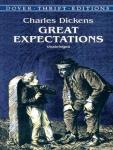
Great Expectations
Charles Dickens
Great Expectations is Charles Dickens' thirteenth novel. It is the second novel, after David Copperfield, to be fully narrated in the first person. Great Expectations is a bildungsroman, or a coming-of-age novel, and the story genre is Victorian Literature. It depicts the growth and personal development of an orphan named Pip.On Christmas Eve, around 1812, Pip, an orphan who is about six years old, encounters an escaped convict in the village churchyard while visiting the graves of his mother, father, and siblings. The convict scares Pip into stealing food and a file to grind away his shackles from the home he shares with his abusive older sister and her kind, passive husband Joe Gargery, a blacksmith. The next day, soldiers recapture the convict while he is engaged in a fight with another convict; the two are returned to the prison ships they escaped from.Miss Havisham, a wealthy spinster, who wears an old wedding dress and lives in the dilapidated Satis House, asks Pip's "Uncle Pumblechook" (who is actually Joe's uncle) to find a boy to play with her adopted daughter Estella. Pip begins to visit Miss Havisham and Estella, with whom he falls in love with Miss Havisham's encouragement. Pip visits Miss Havisham multiple times, and during one of these visits, he brings Joe along. During their absence, Mrs. Joe is attacked by a mysterious individual and lives out the rest of her life as a mute invalid.Later, when Pip is a young apprentice at Joe's blacksmith shop, a lawyer, Mr. Jaggers, approaches him and tells him he is to receive a large sum of money from an anonymous benefactor and must immediately leave for London, where he is to become a gentleman. Assuming that Miss Havisham is his benefactress, he visits her and Estella, who has returned from studying on the Continent.Years later, Pip has reached adulthood and is now heavily in debt. Abel Magwitch, the convict he helped, who was transported to New South Wales where he eventually became wealthy, reveals himself to Pip as his benefactor. There is a warrant for Magwitch's arrest in England, and he will be hanged if he is caught. Pip and his friends Herbert Pocket and Startop hatch a plan for Magwitch to flee by boat. Pip also discovers that Estella is the daughter of Magwitch and Mr. Jaggers' housemaid, Molly, whom Jaggers defended in a murder charge and who gave up her daughter to be adopted by Miss Havisham.Pip learns that Miss Havisham's fiancé jilted her, resulting in her strange behaviour and desire to avenge mankind by using Estella to break Pip's heart. He confronts Miss Havisham with Estella's history. Miss Havisham stands too close to the fire which ignites her dress. Pip is burned while saving her, but she eventually dies from her injuries, lamenting her manipulation of Estella and Pip.A few days before the escape, Joe's journeyman, Orlick, who was responsible for the attack on Mrs. Joe, attacks Pip. Herbert Pocket and his friends save Pip and prepare for the escape.During the escape, Magwitch kills his enemy Compeyson, a con artist and Miss Havisham's fiancé. Police capture Magwitch and jail him. Pip visits a deathly ill Magwitch in jail and tells him Estella is alive. Barely alive, Magwitch responds with a squeezing of Pip's palm and dies shortly after, before his execution. Pip is about to be arrested for unpaid debts when he falls ill. Joe nurses him back to health and pays off Pip's debts. Pip realises that in his fruitless pursuit of Estella and wealth, he has callously ignored Joe. Realising the error of his ways, Pip returns to propose to Biddy, only to find that she and Joe have married.Pip asks Joe for forgiveness, and Joe forgives him. As Pip has lost his fortune upon Magwitch's death, he is no longer a gentleman. Pip promises to repay Joe and goes to Egypt, where he shares lodgings with Herbert and Clara and works diligently as a clerk.Eleven years later, Pip visits the ruins of Satis House and meets Estella, whom her dead husband abused. She asks Pip to forgive her, assuring him that misfortune has opened her heart and that she now empathises with Pip. As Pip takes Estella's hand and leaves the ruins of Satis House, he sees "no shadow of another parting from her."
-
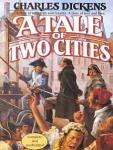
A Tale of Two Cities
Charles Dickens
A Tale of Two Cities (1859) is a novel by Charles Dickens, set in London and Paris before and during the French Revolution. With well over 200 million copies sold, it ranks among the most famous works in the history of fictional literature.The novel depicts the plight of the French peasantry demoralized by the French aristocracy in the years leading up to the revolution, the corresponding brutality demonstrated by the revolutionaries toward the former aristocrats in the early years of the revolution, and many unflattering social parallels with life in London during the same time period. It follows the lives of several protagonists through these events. The most notable are Charles Darnay and Sydney Carton. Darnay is a French once-aristocrat who falls victim to the indiscriminate wrath of the revolution despite his virtuous nature, and Carton is a dissipated English barrister who endeavours to redeem his ill-spent life out of his unrequited love for Darnay's wife. The 45-chapter novel was published in 31 weekly installments in Dickens' new literary periodical titled All the Year Round. From April 1859 to November 1859, Dickens also republished the chapters as eight monthly sections in green covers. All but three of Dickens' previous novels had appeared only as monthly installments. The first weekly installment of A Tale of Two Cities ran in the first issue of All the Year Round on 30 April 1859. The last ran thirty weeks later, on 26 November.
-
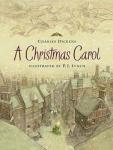
A Christmas Carol
Charles Dickens
A Christmas Carol is a novella by English author Charles Dickens, first published by Chapman & Hall on 19 December 1843. The story tells of sour and stingy Ebenezer Scrooge's ideological, ethical, and emotional transformation resulting from supernatural visits from Jacob Marley and the Ghosts of Christmas Past, Present, and Yet to Come. The novella met with instant success and critical acclaim.The book was written and published in early Victorian Era Britain, a period when there was both strong nostalgia for old Christmas traditions and an initiation of new practices such as Christmas trees and greeting cards. Dickens's sources for the tale appear to be many and varied but are principally the humiliating experiences of his childhood, his sympathy for the poor, and various Christmas stories and fairy tales.The tale has been viewed by critics as an indictment of 19th-century industrial capitalism. It has been credited with restoring the holiday to one of merriment and festivity in Britain and America after a period of sobriety and sombreness. A Christmas Carol remains popular, has never been out of print, and has been adapted to film, stage, opera, and other media multiple times.
